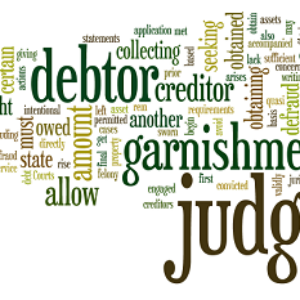ENFORCEMENT OF A JUDGMENT IN SMALL CLAIMS COURT
A judgment in Small Claims Court is just a piece of paper until you take steps to enforce it. Collecting the money you are owed by court order can be sometimes be as daunting as the process of getting the order, but you have the choice of several ways to collect a judgment depending on what you think is most likely to get you paid in full as soon as possible.
In many cases, you will not need to go back to court, as judgment debtors often settle upon receiving the order and a demand letter for payment. But if you need to go back to court, there are three options available:
1. Examination Hearing
You may not know what assets or income a judgment debtor has to pay a judgment from. An examination hearing before a judge of the Small Claims Court can get you that information.
You will need to serve the debtor with a Notice of Examination at least 30 days before the hearing, along with an Affidavit for Enforcement Request setting out the amount owed in the judgment, the amount already paid to you (if any), and the amount still owing.
You will also serve the debtor with a Financial Information Form in which they must set out their income and assets. The debtor must attend the hearing and answer your questions about their income, debts, and assets, and providing supporting documents. If they do not, they can be held in contempt of court, and be fined or even jailed until they comply.
The judge will make orders about payment, and can set a schedule for payment with consequences foe default.
2. Notice of Garnishment
This method is most useful if you know where the debtor works or banks.
To start the process, you need to complete, serve, and file an Affidavit for Enforcement Request setting out the amount owed in the judgment, how much is owed, that the garnishee (employer or bank) will owe the debtor money, and the garnishee’s address. You will need the exact legal name of the employer, or the name and address of the bank branch the debtor banks at.
You should then serve a Notice of Garnishment on the garnishee and then serve the debtor to avoid efforts to thwart payment. The garnishee will then pay the money collected to court.
Some funds cannot be garnished, such as ODSP, Canada Pension Plan, or Ontario Works.
3. Writ of Seizure and Sale
This method can be effective if the debtor owns land or personal property, such as motor vehicles or tools and equipment (subject to exemptions) that could get a good price at public auction.
However, the seizure and sale process can be time-consuming and expensive and especially risky if the debtor has few assets.
You will complete, serve and file an Affidavit for Enforcement Request, at which time the court will issue a Direction to Enforce Writ of Seizure and Sale. You can submit a Writ of Seizure and Sale with the Direction to Enforce to the enforcement (sheriff) office in your municipality, together with an enforcement fee and deposit for enforcement expenses.
The Enforcement Office can seize, store and sell personal property at public auction immediately upon receiving a Direction; you must wait four months to enforce the sale of land.
Despite the time and cost involved in selling land, registering a Writ on title to a debtor’s real estate can be effective in getting full payment over time, as they will likely not be able to get a mortgage or close the sale of the property with paying off the writ.
The lawyers at Alemi Law Group can help you through the small claims court process from filing a claim to collecting a judgment and getting more than a victory on paper.
Disclaimer: To the full extent permitted by law, Alemi Law Group does not make any warranties, conditions, representations of any kind as to the accuracy of this publication and other contents on this website. Accessing or using this website does not form a lawyer-client relationship. Individuals and companies do not become clients of Alemi Law Group and/or its lawyers until such time as Alemi Law Group accepts to represent and that it is confirmed in a formal retainer agreement outlining the exact nature of the legal relationship.


Add a Comment